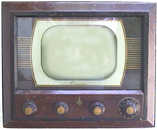 |
 |
| Channel 2 - WMAR |
| The Janitor The Early Riser Bozo Mr. Morning Professor Kool and his Fun Skool TV Pow Caboose Kinderman Arguably, the King of Baltimore kid's TV was Stu Kerr. My earliest memory is of Stu announcing my third birthday on the air in 1957. Of Stu Kerr, Royal Parker recently said: "We had a lot of guys come through this town and I don't care if it was Lorenzo, Bob McAllister, Richard Dix, Lary Lewman, Rhea, Patches, but Stu was the least to want to do kid's shows. He had wanted to be a sports announcer. But because of the nature of this business, he had to do kid's shows. There was never anybody--none of us--that worked any harder at honing their skills or preparing than Stu Kerr. There was a guy who went into the magic shop, bought magic tricks, learned them, practiced them, went to the library. He would really sit down and prepare and work on it. If I didn't have an autographed picture to give out, I was lost for what to do at a personal appearance, but I'll tell you, I stood in awe of Stu Kerr. He was concerned. He wasn't just going to hand out pictures. When he went out to do personal appearances, he had a 30-minute show that he'd prepared, the likes of which you didn't see on television. It was strictly for his personal appearances. And he entertained adults as well with routines that he'd worked on. He was good, and I doff my cap to him--I take it off to him. He worked at doing good kid's shows." Fellow kid's show host Lary Lewman added: "He did a whole separate act for personal appearances. Stu put forth an enormous effort. The rest of us sat on a flatbed truck and passed out pictures. We had nothing to do. You take Pete the Pirate out of the studio and I couldn't fire a cannon or anything. But Stu had a whole mechanical magic act that he did on stage, so he was ready and he was really good." Born Thomas Stewart Kerr in New York City on March 9, 1928, Stu became interested in broadcasting at a young age, despite being voted the shyest member of his class at Yonkers High. That early interest led to a job in the mid-1940's as page boy at NBC in Rockefeller Center, "sitting in Lowell Thomas' seat right after he left, while it was still warm," he once told a reporter. At NBC, Kerr became fast friends with another up-and-coming children's entertainer Bob Keeshan, who, before the decade was out, would portray Clarabell the Clown on "Howdy Doody," then go on to even greater fame as "Captain Kangaroo." Taking advantage of all opportunities, Stu would often salvage old radio scripts and commercial copy to practice his announcing technique. His efforts paid off when he was hired for his first announcing job in 1947 at the old WANN (now WBIS) in Annapolis. From WANN, Kerr went on to positions at WFMD in Frederick, then WINX in Washington, before being drafted into the Army where he served in combat in Korea for nearly a year as a member of the infantry. Following his discharge in 1952, Stu returned to Baltimore and landed a job as night announcer for WMAR-TV. His first on-camera work came as "The Janitor," a late-night character and program featuring Stu in a cap and tattered shirt, carrying a bucket and mop, wandering the hallways and offices of Channel 2, then in the old Sunpapers building at Charles and Redwood Streets, now the site of the Mechanic Theatre. Stu moved to mornings in the late '50's, taking the janitor character with him for a new program titled "The Early Riser." This was really the first time Baltimore youngsters were exposed to the talents of Stu Kerr, who lip-synched to popular songs, interacted with puppets, pantomimed, dressed in drag, and introduced cartoons, taking full advantage of all available technical advances of the day including video tape. By the mid-1960's, WMAR had moved to a new facility on York Road in Rodgers Forge, and Stu abandoned the janitor character to become the top-hat wearing "Mr. Morning," a program that aired opposite the popular "Lorenzo" on Channel 13. Around the same time, Stu donned the heavy makeup, head piece, costume and floppy feet that transformed him into "Bozo The Clown." Working with a studio full of youngsters, Bozo led games and dances, introduced Bozo |